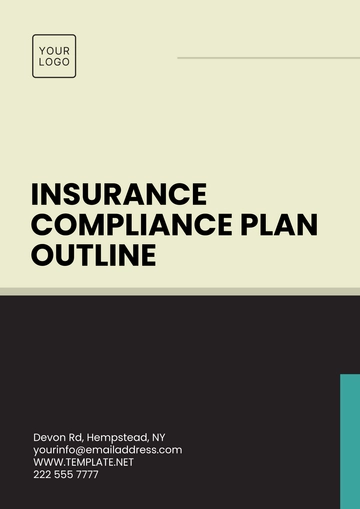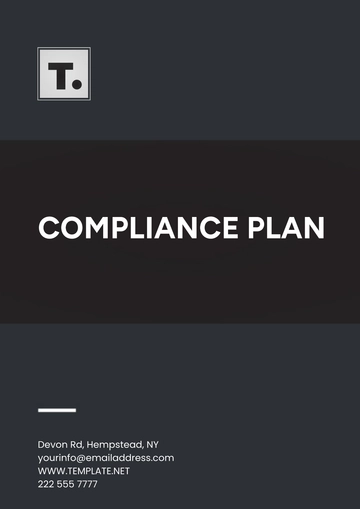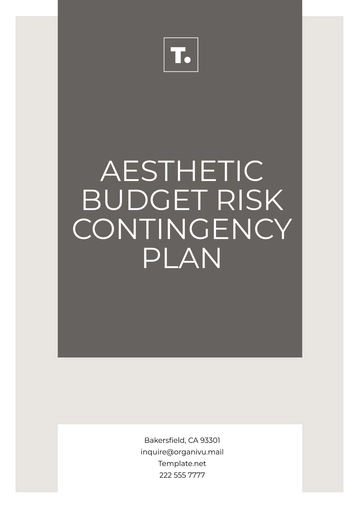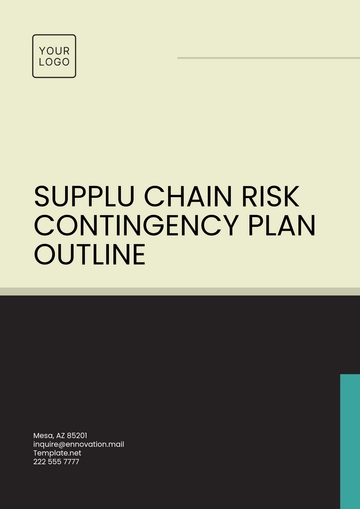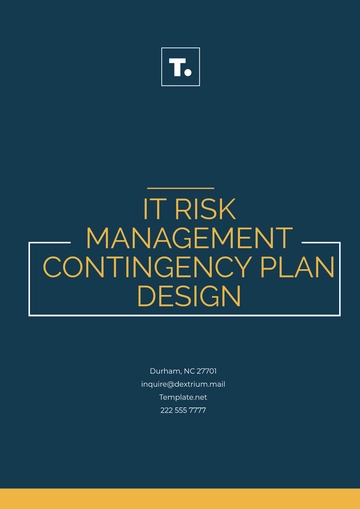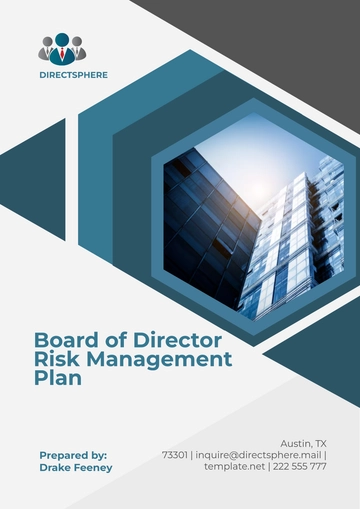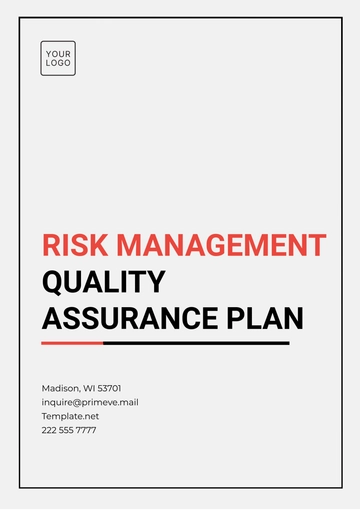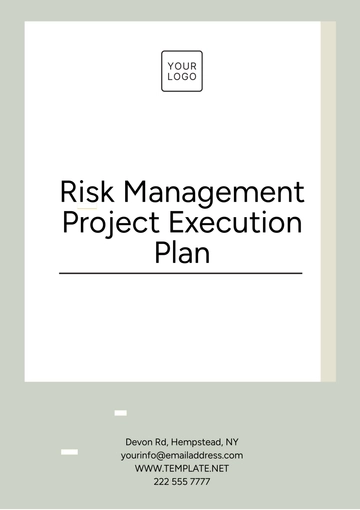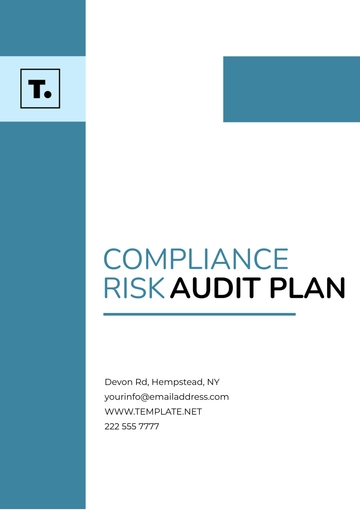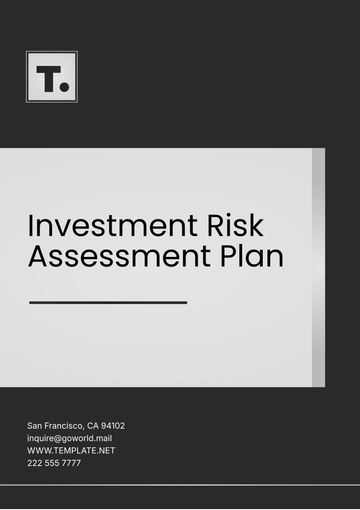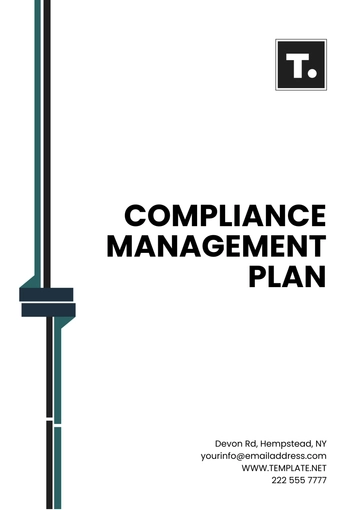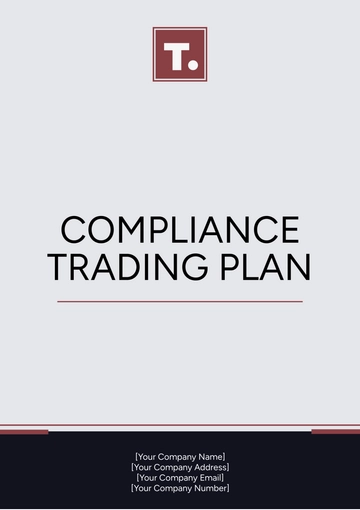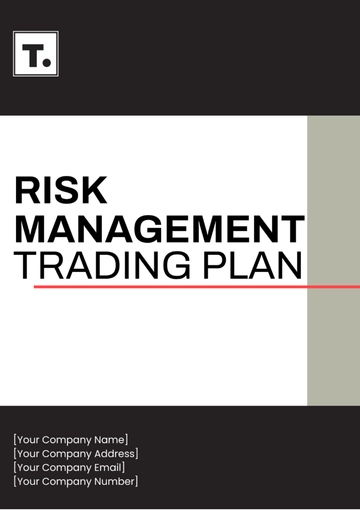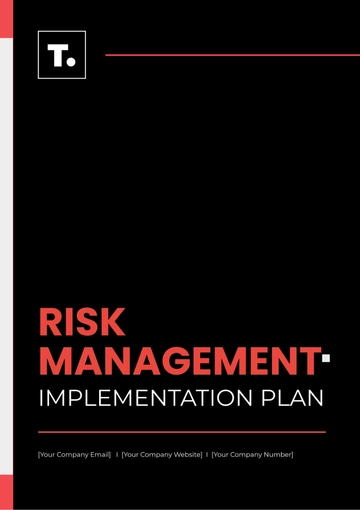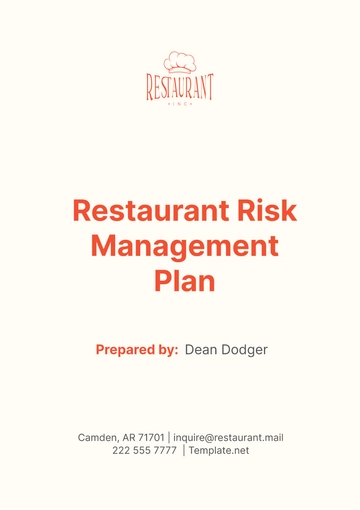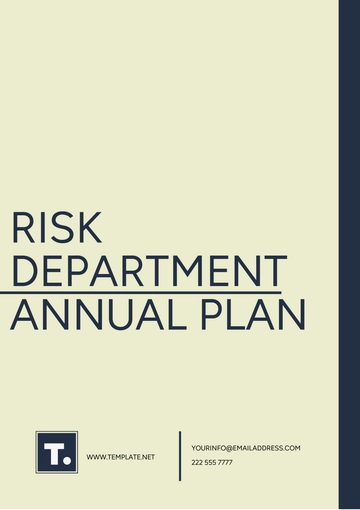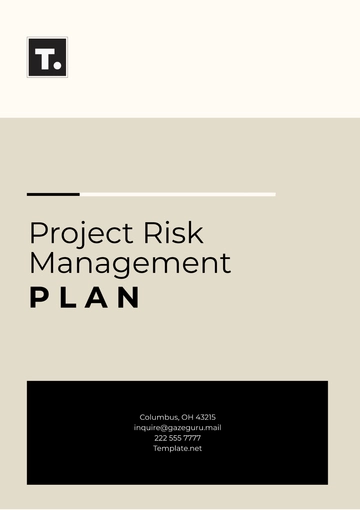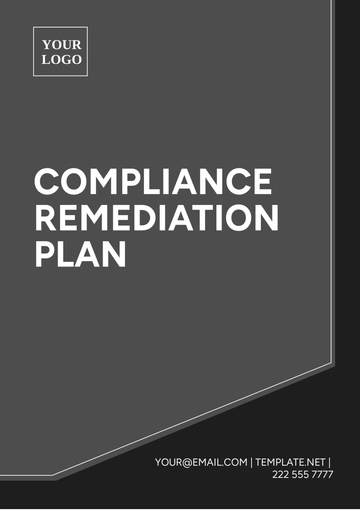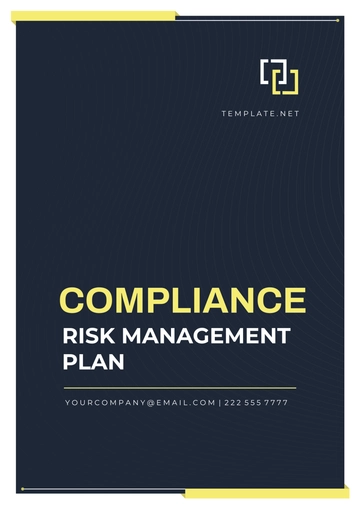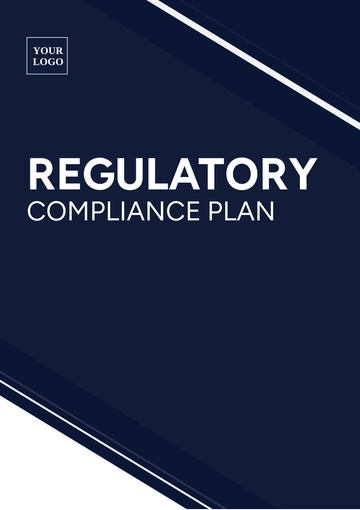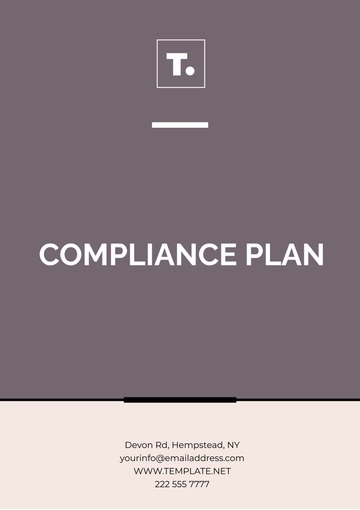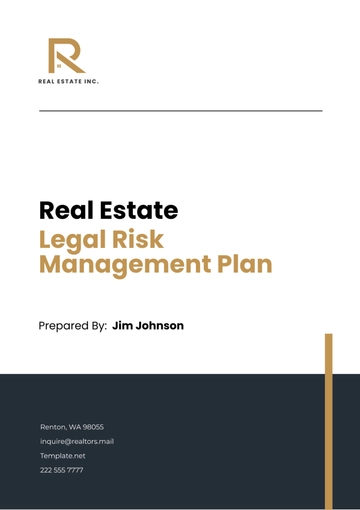Free Marketing Event Risk Management Plan
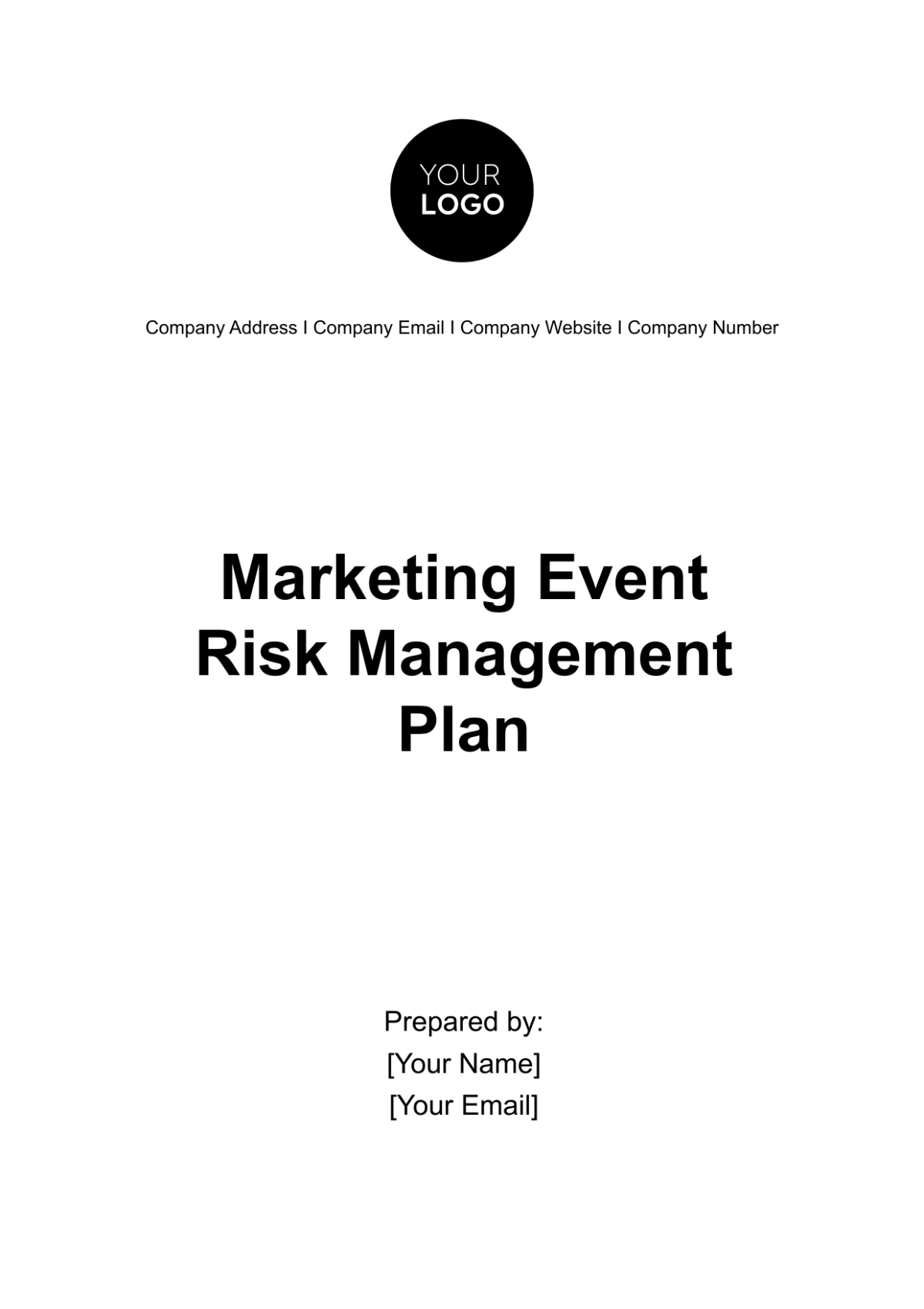
Introduction
Welcome to the Marketing Event Risk Management Plan for [Your Company Name]. This document is designed to help you identify, assess, and mitigate risks associated with your upcoming marketing event. By following this plan, you will enhance the chances of a successful event while minimizing potential disruptions.
Event Overview
In this section, we will delve into the comprehensive overview of your marketing event, encompassing its objectives, target audience, and expected outcomes.
Event Details
Event Name: | Grand Product Launch - X1 |
Event Date: | November 20, 2050 |
Event Location: | Metropolitan Convention Center, New York City |
Event Objectives: |
|
Objectives
The primary objectives of the Grand Product Launch - X1 are to introduce our groundbreaking product, the X1, to the market. We aim to create awareness, generate anticipation, and ultimately secure 500 pre-orders within one month of the event.
Target Audience
Our target audience includes tech enthusiasts, early adopters, and industry influencers interested in innovative technology products.
Expected Outcomes
We anticipate the following outcomes:
1,000 event attendees
500 pre-orders secured within a month
Extensive media coverage and positive reviews
Risk Identification:
In this section, we will systematically identify and categorize potential risks associated with your marketing event. These risks can encompass logistical challenges, financial uncertainties, potential damage to your brand's reputation, legal compliance issues, and more.
Identified Risks
Risk 1: | Technical Glitches |
Description: | Unforeseen technical issues during the product demonstration. |
Likelihood: | Medium |
Impact: | High |
Responsible Party: | IT Team |
Mitigation Plan: | Ensure thorough technical rehearsals and have backup equipment ready. |
A. Risk 1 - Detailed Description
Technical glitches may occur due to software or hardware failures during the live product demonstration. These issues could disrupt the event and negatively impact our brand image.
Likelihood and Impact Assessment: The likelihood of technical glitches is assessed as medium since despite thorough testing, unexpected issues can arise. However, the impact is high because any disruptions during the product launch can result in negative press and lost sales opportunities.
Responsible Party: The IT Team will be responsible for monitoring and addressing technical issues.
Mitigation Plan for Risk 1: To mitigate this risk, we will conduct thorough technical rehearsals in the event space. Additionally, we will have backup equipment on hand, and the IT Team will be on standby to resolve any issues promptly.
Risk 2: | Low Attendance |
Description: | Insufficient audience turnout. |
Likelihood: | Medium |
Impact: | Medium |
Responsible Party: | Marketing Team |
Mitigation Plan: | Aggressively promote the event through various channels and offer early bird incentives. |
B. Risk 2 - Detailed Description
Low attendance can undermine the success of the event by limiting the exposure of our new product to potential customers.
Likelihood and Impact Assessment: The likelihood of low attendance is assessed as medium, given our marketing efforts. The impact is considered medium as it may affect our ability to generate interest and pre-orders.
Responsible Party: The Marketing Team is responsible for promoting the event and attracting attendees.
Mitigation Plan for Risk 2: To mitigate the risk of low attendance, we will aggressively promote the event through social media, email campaigns, and partnerships with tech blogs. Early bird incentives will be offered to encourage registrations.
Risk Assessment:
In this section, we will assign a likelihood and impact rating to each identified risk. This assessment is vital for prioritizing risks based on their potential severity.
Risk Assessment Table
Risk | Likelihood | Impact | Priority |
Technical Glitches (Risk 1) | Medium | High | High |
Low Attendance (Risk 2) | Medium | Medium | Medium |
Explanation of Risk Assessment
Technical Glitches (Risk 1): This risk has a medium likelihood of occurring, but its impact is high, making it a high-priority concern. Mitigation efforts should focus on ensuring a smooth technical execution during the event.
Low Attendance (Risk 2): While there's a medium likelihood of this risk materializing, its impact is considered medium as well. It's crucial to address this risk to maximize the event's success, but it's of moderate priority compared to the technical glitches.
Risk Mitigation:
In this section, we will outline specific actions and strategies to reduce or eliminate each identified risk. Responsible parties will be assigned, and timelines and deadlines will be specified.
Risk Mitigation Plan
Risk 1: | Technical Glitches |
Responsible Party: | IT Team |
Mitigation Action 1: | Conduct thorough technical rehearsals |
Timeline: | 2 weeks before the event |
Deadline: | November 5, 2050 |
Risk 2: | Low Attendance |
Responsible Party: | Marketing Team |
Mitigation Action 1: | Launch aggressive social media campaigns |
Timeline: | Starting immediately |
Deadline: | Ongoing until event date |
Contingency Planning:
In this section, we will describe contingency plans for high-impact and high-likelihood risks that cannot be entirely mitigated.
Contingency Plan:
A. Risk 1: Technical Glitches
Description: In the event of technical glitches during the live demonstration, we will have a pre-recorded video presentation as a backup.
Responsible Party: IT Team
Action Steps:
Immediately switch to the pre-recorded video if glitches occur.
Notify the audience about the change.
Address technical issues during the event's break.
Communication Plan: The Marketing Team will prepare scripted announcements to communicate the switch to the pre-recorded video and reassure the audience.
B. Risk 2: Low Attendance
Description: If attendance is lower than expected, we will offer exclusive online access to the event for a limited time to reach a wider audience.
Responsible Party: Marketing Team
Action Steps:
Promote the online access option on social media and email.
Provide a recording of the event for those who missed it.
Extend early bird incentives for online registrants.
Communication Plan: The Marketing Team will create and execute a communication strategy to inform potential attendees about the online access option and incentives.
Monitoring and Reporting:
In this section, we will explain how the event's progress will be monitored for potential risks. We will define reporting mechanisms to track risk status and communicate updates to stakeholders.
Monitoring and Reporting Plan:
Frequency of Monitoring: Continuous monitoring of technical aspects during the event, weekly progress reviews for marketing efforts.
Reporting Mechanism: Real-time alerts for technical issues, weekly progress reports for marketing.
Responsible Party: IT Team for technical monitoring, Marketing Team for marketing progress.
Communication Plan:
In this section, we outline how and when communication about risks and their mitigation will be shared with stakeholders, both internally and externally.
Internal Communication
We will maintain open and regular communication within our internal teams using a dedicated Slack channel. Weekly meetings will be held to discuss the progress of risk mitigation actions and address any emerging concerns.
External Communication
For external communication, we will use a multi-channel approach:
Pre-event: A series of teaser posts on our social media platforms will create excitement and anticipation. An email campaign will be launched to registered attendees, highlighting the event's benefits.
During the event: Real-time updates, including live tweets and behind-the-scenes content, will be shared on our social media channels. We will also provide a contact email for attendees to report any issues or ask questions.
Post-event: A comprehensive event summary will be posted on our website, along with a feedback form. Attendees and interested parties will be informed of the event's success, achievements, and follow-up actions.
Budget and Resources:
Specify the financial resources allocated for risk management activities.
Total Budget for Risk Management: | $15,000 |
Technical Rehearsals: | $5,000 |
Marketing Campaigns: | $6,000 |
Contingency Resources: | $3,000 |
Monitoring Tools and Services: | $1,000 |
Review and Evaluation
In this section, we define when and how the risk management plan will be reviewed and updated during the course of the event planning and execution.
Review Dates
Weekly risk management meetings leading up to the event to assess progress.
Immediate post-event evaluation to gather feedback and identify areas for improvement.
Monthly follow-up reviews for three months post-event to analyze long-term impacts.
Update Process
Any identified risks during the event will be addressed in real-time.
After the event, a comprehensive review will be conducted to assess the effectiveness of risk mitigation strategies and contingency plans.
Updates to the risk management plan will be made as necessary, incorporating lessons learned and best practices for future events.
- 100% Customizable, free editor
- Access 1 Million+ Templates, photo’s & graphics
- Download or share as a template
- Click and replace photos, graphics, text, backgrounds
- Resize, crop, AI write & more
- Access advanced editor
Ensure seamless events with Template.net's Event Risk Management Plan Template. This editable and customizable tool empowers you to identify, assess, and mitigate potential risks, safeguarding your event's success. With intuitive editing in our Ai Editor Tool, tailor the plan to your needs effortlessly. Minimize uncertainties and maximize outcomes today!
You may also like
- Finance Plan
- Construction Plan
- Sales Plan
- Development Plan
- Career Plan
- Budget Plan
- HR Plan
- Education Plan
- Transition Plan
- Work Plan
- Training Plan
- Communication Plan
- Operation Plan
- Health And Safety Plan
- Strategy Plan
- Professional Development Plan
- Advertising Plan
- Risk Management Plan
- Restaurant Plan
- School Plan
- Nursing Home Patient Care Plan
- Nursing Care Plan
- Plan Event
- Startup Plan
- Social Media Plan
- Staffing Plan
- Annual Plan
- Content Plan
- Payment Plan
- Implementation Plan
- Hotel Plan
- Workout Plan
- Accounting Plan
- Campaign Plan
- Essay Plan
- 30 60 90 Day Plan
- Research Plan
- Recruitment Plan
- 90 Day Plan
- Quarterly Plan
- Emergency Plan
- 5 Year Plan
- Gym Plan
- Personal Plan
- IT and Software Plan
- Treatment Plan
- Real Estate Plan
- Law Firm Plan
- Healthcare Plan
- Improvement Plan
- Media Plan
- 5 Year Business Plan
- Learning Plan
- Marketing Campaign Plan
- Travel Agency Plan
- Cleaning Services Plan
- Interior Design Plan
- Performance Plan
- PR Plan
- Birth Plan
- Life Plan
- SEO Plan
- Disaster Recovery Plan
- Continuity Plan
- Launch Plan
- Legal Plan
- Behavior Plan
- Performance Improvement Plan
- Salon Plan
- Security Plan
- Security Management Plan
- Employee Development Plan
- Quality Plan
- Service Improvement Plan
- Growth Plan
- Incident Response Plan
- Basketball Plan
- Emergency Action Plan
- Product Launch Plan
- Spa Plan
- Employee Training Plan
- Data Analysis Plan
- Employee Action Plan
- Territory Plan
- Audit Plan
- Classroom Plan
- Activity Plan
- Parenting Plan
- Care Plan
- Project Execution Plan
- Exercise Plan
- Internship Plan
- Software Development Plan
- Continuous Improvement Plan
- Leave Plan
- 90 Day Sales Plan
- Advertising Agency Plan
- Employee Transition Plan
- Smart Action Plan
- Workplace Safety Plan
- Behavior Change Plan
- Contingency Plan
- Continuity of Operations Plan
- Health Plan
- Quality Control Plan
- Self Plan
- Sports Development Plan
- Change Management Plan
- Ecommerce Plan
- Personal Financial Plan
- Process Improvement Plan
- 30-60-90 Day Sales Plan
- Crisis Management Plan
- Engagement Plan
- Execution Plan
- Pandemic Plan
- Quality Assurance Plan
- Service Continuity Plan
- Agile Project Plan
- Fundraising Plan
- Job Transition Plan
- Asset Maintenance Plan
- Maintenance Plan
- Software Test Plan
- Staff Training and Development Plan
- 3 Year Plan
- Brand Activation Plan
- Release Plan
- Resource Plan
- Risk Mitigation Plan
- Teacher Plan
- 30 60 90 Day Plan for New Manager
- Food Safety Plan
- Food Truck Plan
- Hiring Plan
- Quality Management Plan
- Wellness Plan
- Behavior Intervention Plan
- Bonus Plan
- Investment Plan
- Maternity Leave Plan
- Pandemic Response Plan
- Succession Planning
- Coaching Plan
- Configuration Management Plan
- Remote Work Plan
- Self Care Plan
- Teaching Plan
- 100-Day Plan
- HACCP Plan
- Student Plan
- Sustainability Plan
- 30 60 90 Day Plan for Interview
- Access Plan
- Site Specific Safety Plan


